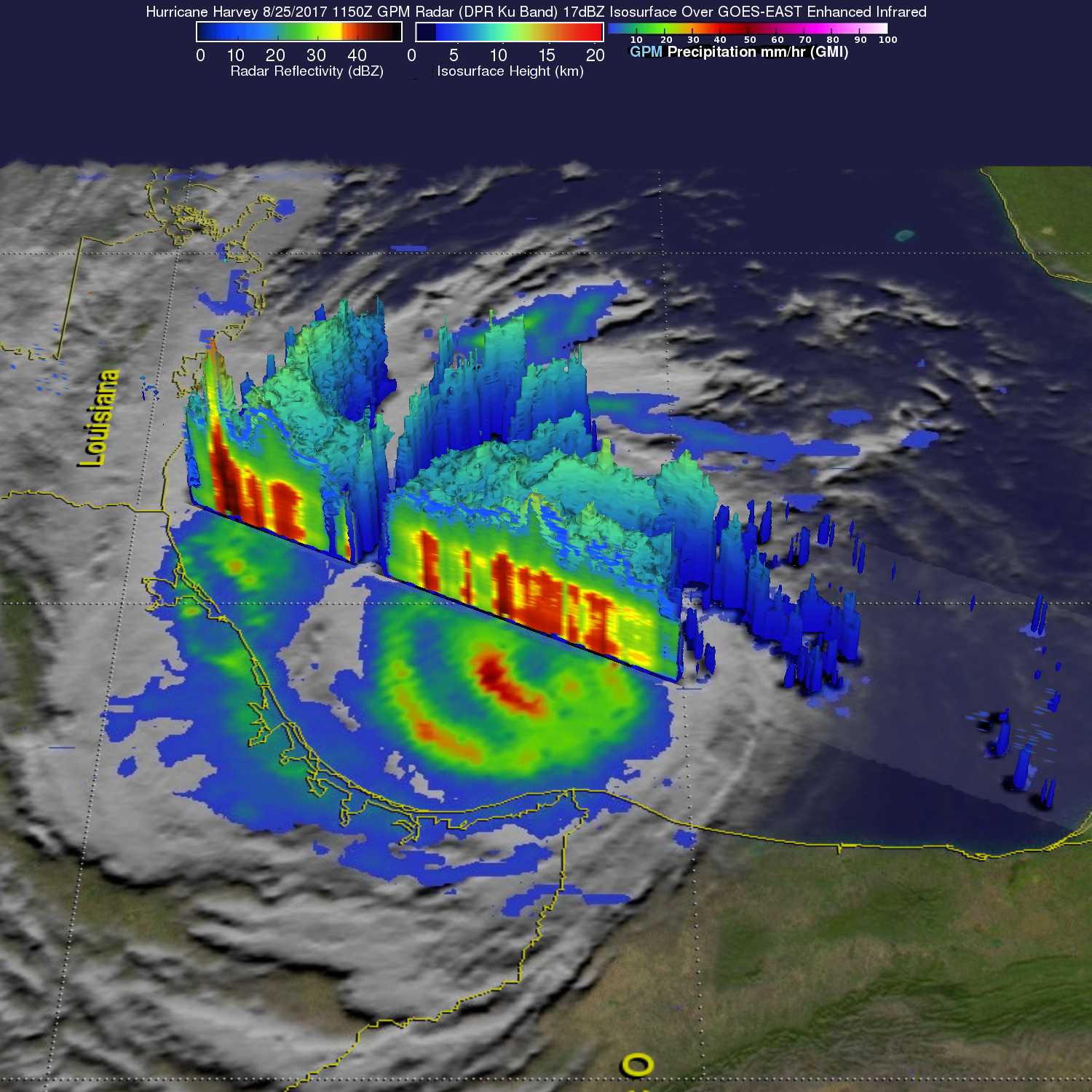GPM's Radar Measures Intense Rain In Hurricane Harvey
Hurricane Harvey's has continued to intensify today as it moves toward the Texas coast. Bands of rain from the hurricane were affecting the Gulf coast from Louisiana to southeastern Texas.
The Global Precipitation Measurement (GPM) mission core observatory satellite had another look at hurricane Harvey on August 25, at 7:50 AM CDT (1150 UTC) as it was menacing the Texas gulf coast. GPM's Dual-Frequency Precipitation Radar (DPR) instrument scanned precipitation within powerful storms wrapping around the eastern side of the hurricane. DPR found that intense storms in that area were dropping rain at a rate greater than 3.2 inches (82 mm) per hour.
GPM's Radar (DPR Ku Band) also was used to examine the 3-D configuration of precipitation within the storms on hurricane Harveys' eastern side. DPR showed that storm tops there reached altitudes above 9.2 miles (14.8 km). GPM's radar found the tallest of these powerful storms in a band of precipitation that was approaching the coastline near the Texas and Louisiana borders. These storms were measured by GPM's radar reaching an altitude of over 10.3 miles (16.6 km).
Harvey is expected to be a Category 3 hurricane when it hits the Texas coast near Corpus Christi early Saturday morning. Storm surge flooding along the Texas coast is expected to reach heights of 6 to 12 feet (1.8 - 3.7 meters). Catastrophic flooding is predicted in the area due to an expected 15 to 25 inches (381.0 to 635 mm) of rainfall.




